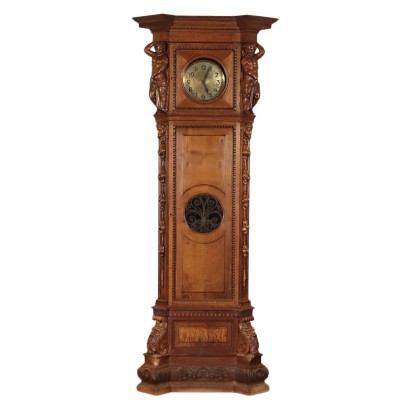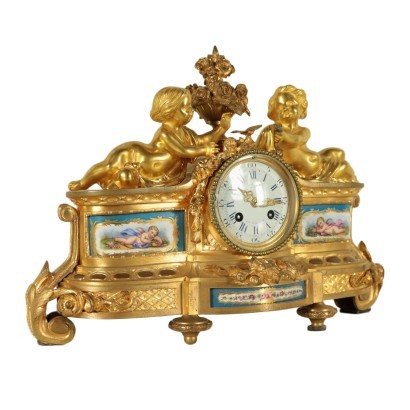Neo-Renaissance Pendulum Clock, Walnut, Italy 20th Century
Features
Style: Neo-Renaissance Revival
Age: 20th Century / 1901 - 2000
Origin: Italy
Main essence: Walnut
Description
The mixtilinear base has frames engraved with leafy scrolls.Two engraved grotesque masks frame a wide reserve in which there is an inlaid freize that represents a procession of putti. The pillars are engraved with bunches of fruits while on the upper parte ther are two feminine faces. The vise with arabic numbers is framed by a Caryatid and a telamon that support the upper cap. Spide web keys.
Product Condition:
Fair condition. Wear consistent with age and use.
Dimensions (cm):
Height: 242
Width: 90
Depth: 53
Additional Information
Style: Neo-Renaissance Revival
Stylistic revival, from the 1900s, of the forms typical of the Renaissance style.This is a style that re-proposes, looking at the grandeur of the past, decorative motifs and decorations typical of the 1500s.
Mascheroni, cornices, columns carved with herms that make up typical architectural structures of Renaissance palaces, are the elements that characterize the Neo-Renaissance style.
These elements will remain in the production of furniture until the early 1900s, contaminating themselves with floral elements.
Find out more about the Neo-Renaissance with our insights:
A Milanese library between the Belle Epoque and Fascism






































